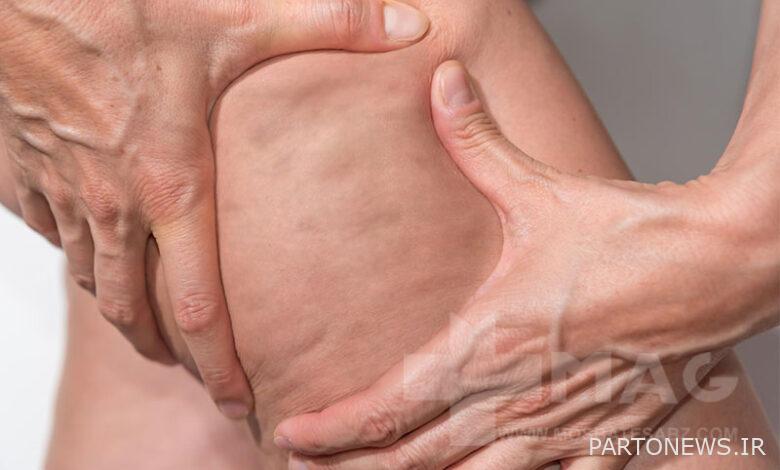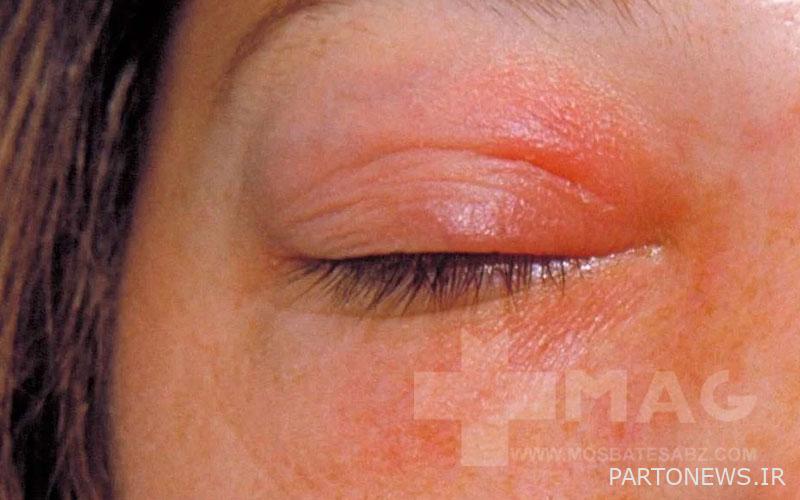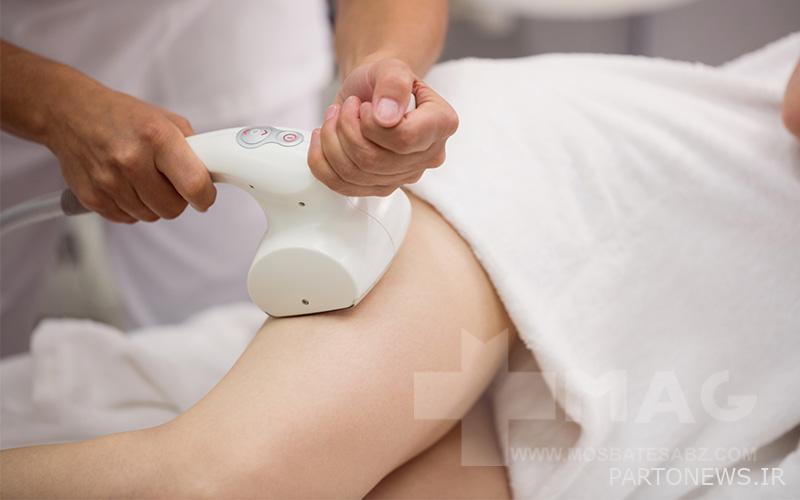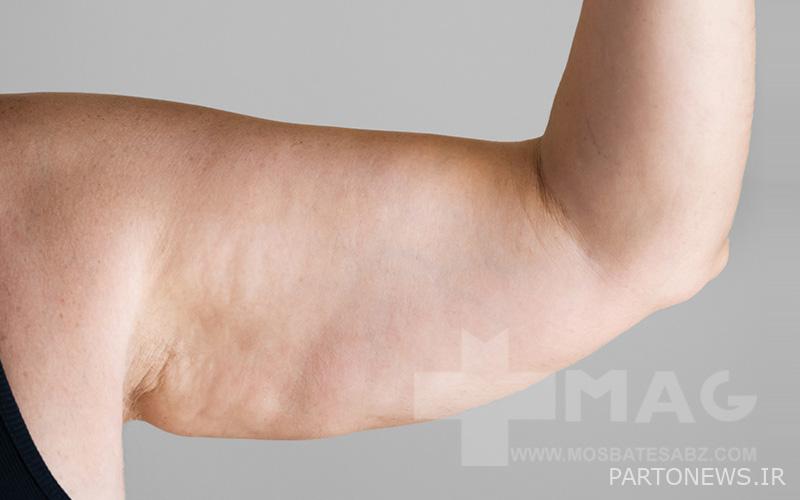What is cellulite? Cellulite treatment with different methods + photos

Cellulite is a condition in which the skin becomes rough and sometimes changes color. When you run your hand over the skin with cellulite, you will feel the roughness of the skin. The most areas of the body that suffer from cellulite are the thighs, legs and buttocks, but cellulite can also occur in any other area of the body. To better understand what cellulite is, stay with us until the end of this article.
What we read in this article
What is cellulite?
Cellulite is a term for a condition in which the skin develops bumps and depressions and has an uneven appearance with slight discoloration. Cheesy pits or orange peel are other names for cellulite. Cellulite can affect both women and men.
It is interesting to know that between 80 and 90 percent of women experience cellulite at some point in their lives.
Today, there are many treatments for cellulite, but most of them are temporary. One of the commonly recommended treatments is the use of anti-cellulite cream. A low-fat diet, smoking cessation and having a healthy and active lifestyle can reduce the possibility of cellulite in people.
Classification of types of cellulite
In 2009, a study was conducted on the severity scale of cellulite and it was found that cellulite can be classified into 3 grades:
- Mild (grade 1): The appearance of the skin becomes orange and there are 1 to 4 superficial depressions on the skin surface.
- Moderate (second degree): There are between 5 and 9 indentations of moderate depth on the surface of the skin, and the appearance of the skin becomes cheesy.
- Severe (3rd degree): There are about 10 deep indentations on the surface of the skin, and when you touch the skin, you can easily notice the depressions and elevations.
What is the cause of cellulite?
The exact cause of cellulite is unknown, but it appears to be caused by the interaction between the connective tissue in the skin layer that lies below the skin’s surface and the fat layer just below it. In women, fat cells and connective tissue are located vertically in this layer. Cellulite occurs if fat cells protrude from the skin layer.
But the tissue of fat cells in men is different and has a cross structure, and maybe this is the reason why cellulite is less likely to occur in men than in women. Except for this case, it seems that the cause of cellulite is related to other factors:
Age and hormonal factors
Estrogen, insulin, noradrenaline, thyroid hormones and prolactin are part of the cellulite production process. For this reason, it seems that hormones play an important role in the development of cellulite.
One theory is that as women age and approach menopause, blood flow to the connective tissue under the skin decreases. Less blood circulation means less oxygen in the relevant area and reduces collagen production. As estrogen levels decrease, fat cells become larger. These factors are combined and cause fat deposits to appear more and cellulite to be observed.
Aging also causes the skin to be less elastic and thinner and more likely to sag. This issue is also effective in increasing the probability of cellulite.
The influence of genetics on cellulite
Research shows that certain genes are effective in causing cellulite. Genetic factors can be related to metabolic rate, subcutaneous fat distribution, ethnicity, and blood circulation levels. These factors increase the possibility of cellulite.
The role of nutrition and lifestyle in cellulite
Although a healthy lifestyle reduces the likelihood of cellulite, you should know that cellulite is not caused by toxins.
People who consume too much fat, carbohydrates, salt and fiber are more likely to develop cellulite than others. Also, people who smoke, people who do not exercise and are not active and sit or stand for a long time in a fixed position may be involved in cellulite more than others.
Be aware that wearing tight clothing may contribute to cellulite by restricting blood flow. Cellulite is not only for fat people, but people who have extra fat are more prone to cellulite than thin people. If you are overweight, we suggest you diet, increase physical activity and buy slimming pills. Cellulite is more likely to occur after the age of 25, but even teenagers can have cellulite.
Types of cellulite
Cellulite has 3 different types:
soft cellulite
Soft cellulite, which is also known as loose cellulite, is usually associated with sagging skin and often occurs in areas with fat accumulation; Like arms, stomach, thighs, legs and hips. Although soft cellulite makes the skin wavy, it is not painful.
Hard or compact cellulite
People call hard cellulite orange peel. This type of cellulite can occur in all people, even thin people. Hard cellulite, if severe, can sometimes feel slightly painful to the touch. Hard cellulite is very difficult to treat.
Edmatous cellulitis
Cellulite due to poor blood circulation is known as edematous cellulitis and its treatment is very challenging. Edematous cellulite is aggravated by fluid retention in the body. We usually see this problem in the thighs and knees. The skin can be painful to the touch.
What is eye cellulitis?
Eye cellulitis is a type of bacterial infection that affects the skin, fat and muscles around the eyes. Swelling, redness, hyperemia and pain in the eye area are symptoms of this condition. Eye cellulitis, if left untreated, may lead to vision loss. In this condition, if there is eye pain and swelling along with fever, you should see a doctor immediately.

Cellulite treatment
So far, several treatment methods for cellulite have been introduced, but none of them have been fully confirmed by scientific research. These methods include:
Sound waves for the treatment of gout
In this method, the connective tissue in areas of the body that are prone to cellulite are vibrated by sound waves, and by stimulating collagen production, the appearance of the skin is improved. To treat cellulite in this method, several sessions are needed. If you want to prevent the collagen level in your body from decreasing with age, take collagen pills.
Laser therapy for cellulite
With laser therapy for 1 year or more, you can improve the appearance of your skin in terms of cellulite to some extent. In this method, collagen production is stimulated and the skin becomes thicker. Thickening of the skin makes cellulite appear less.

subsession; Cellulite killer
In this method, the dermatologist places a needle under the skin to break the bands of connective tissue. The result of this operation can last up to 2 years.
Vacuum assisted precision release
In this method, a device containing small blades cuts skin tissues. In this case, the underlying tissue of the skin moves up and fills the space under the skin to improve the appearance of cellulite. The result of this method can last up to 3 years.
Carboxytherapy to improve cellulite
Carboxytherapy involves placing carbon dioxide gas under the skin. Bruising and a little discomfort after Carboxytherapy It is considered one of its common side effects, but instead, the appearance of cellulites is greatly improved.
Endermology
Endermologie involves a deep massage with a vacuum-like device that lifts the skin. More research is needed on whether this method is really effective or not.

Radiotherapy to reduce cellulite
In this method, through heating, the appearance of cellulite is somewhat improved, but the results are short-term and completely temporary.
Laser-assisted liposuction
In this method, a small amount of fat is lost, but the appearance of cellulite may even worsen. More research is needed on the effectiveness of this method.
Ultrasonic liposculpting
In this method, fat is also targeted, but again, research does not fully show that this method is really effective. So there is a need for more studies.
Anti-cellulite drugs or creams
In order to treat cellulite, some drugs and creams can be used:
- Caffeine-containing creams: Caffeine dehydrates cells and makes them less visible. Caffeine cream for cellulite treatment must be used every day to be effective. Vionex Deltax Delta Daro herbal topical slimming cream is one of the anti-cellulite creams, which is also considered as a skin firmer.
- Creams containing retinol: Retinol may help improve the appearance of cellulite by thickening the skin. It takes at least 6 months for the results of this cream to appear.
Also, some researchers suggest drugs that increase cellular metabolism or blood circulation to treat cellulite. But more research is needed on the effectiveness of these methods.
Definitive treatment of infectious cellulitis
What is infectious cellulitis? Infectious cellulitis is a common bacterial infection that causes redness, swelling, and pain in the affected area. If left untreated, cellulitis can spread and cause serious health problems. Therefore, it is necessary to take good care of the wound so that the disease does not spread.
Definitive treatment of infectious cellulitis includes the use of antibiotics such as cephalexin, amoxicillin and cloxacillin. Penicillin may also be prescribed. If a person is allergic to penicillin, erythromycin or clindamycin can be substituted. However, the type of medicine must be specified by the doctor.
last word
What is cellulite? A condition in which the skin becomes indented and raised. Various factors play a role in the creation of cellulite, which we mentioned in this article from the Green Positive Online Pharmacy magazine. As we have described, cellulite treatment methods are usually temporary, but sometimes they can work successfully for several years and improve the appearance of the skin. Also, if you have any questions about cellulite, write to us in the comments so that our experts can answer you.

